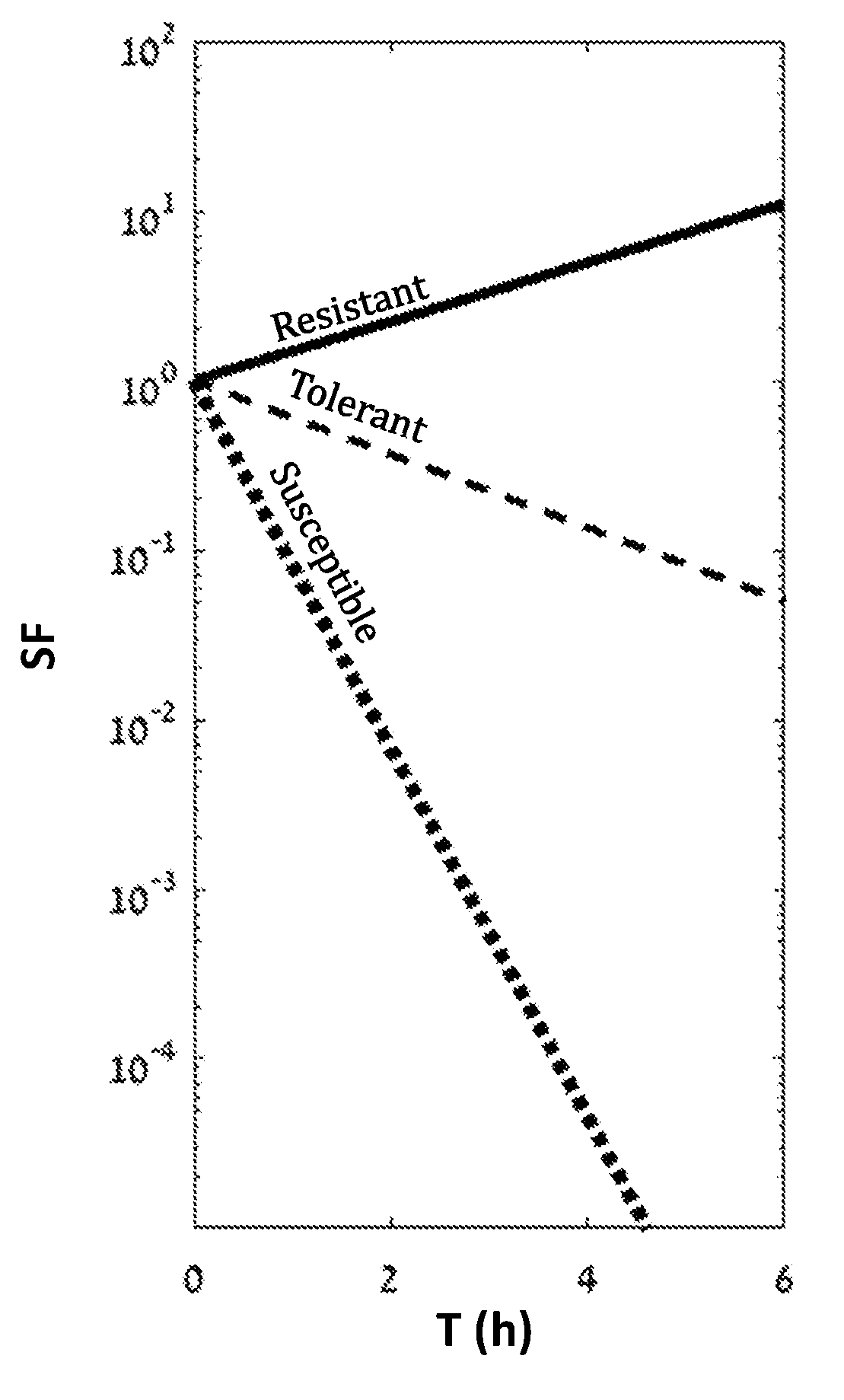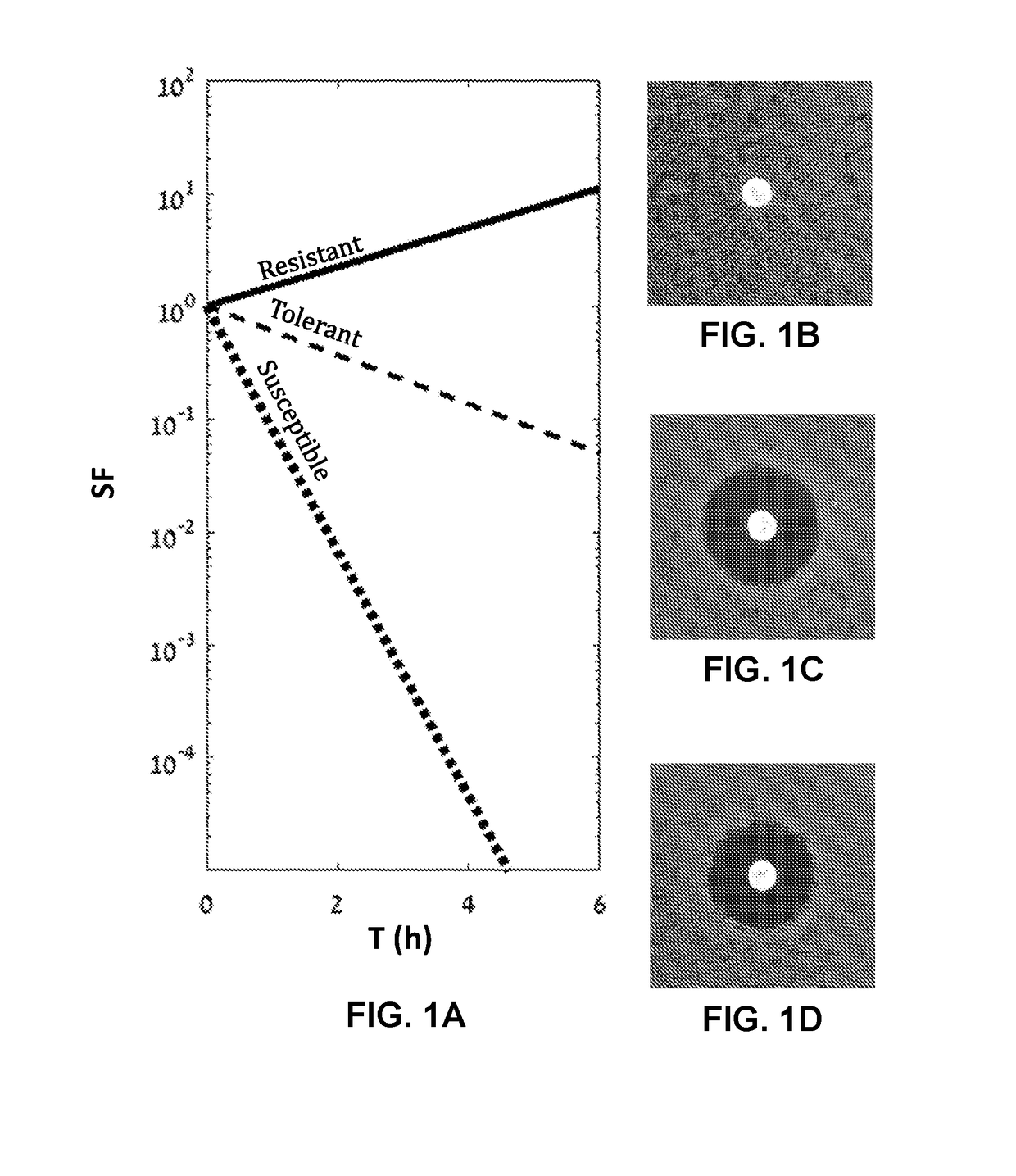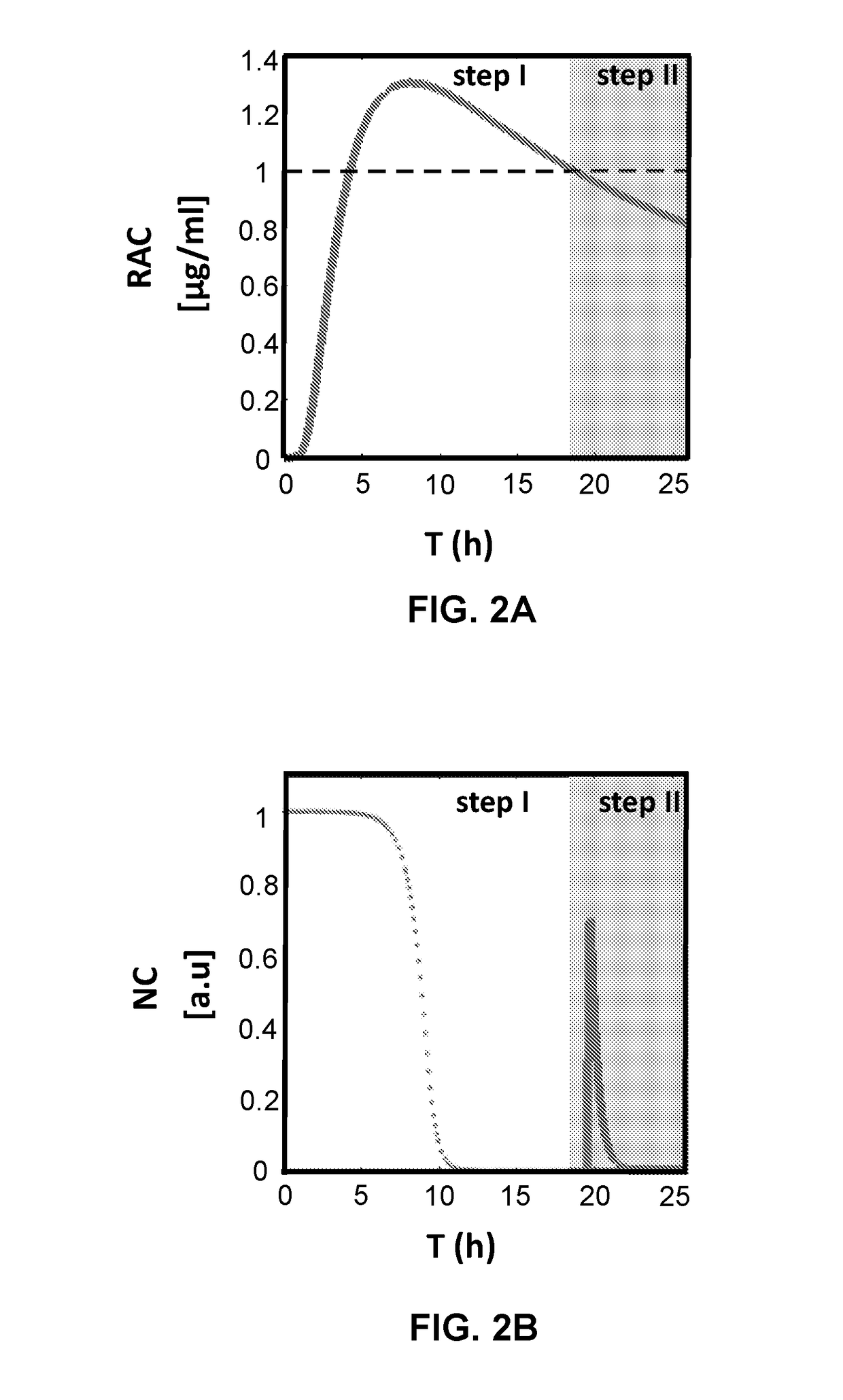Kit and discs for use in disc diffusion antibiotic sensitivity testing
a technology of disc diffusion and antibiotic sensitivity, applied in the field of microbiology, can solve the problems of ineffective basic mode of action, inability to apply the same treatment to survival strategies, and failure of antibiotic treatments, and achieve the effect of effectively eliminating tolerant bacteria
- Summary
- Abstract
- Description
- Claims
- Application Information
AI Technical Summary
Benefits of technology
Problems solved by technology
Method used
Image
Examples
example 1
[0211]The Standard Disk-Diffusion Assay does not Detect Tolerant Bacteria
[0212]The Kirby-Bauer disk diffusion method is designed to identify resistant bacteria by creating a gradient of concentration around a disk impregnated with antibiotics. A resistant strain (FIG. 1B) will grow closer to the disk than a susceptible strain (FIG. 1D). However, applying the disk diffusion assay to a mutant strain that evolved under 3 hours of intermittent ampicillin exposures, and bearing tolerance mutation in the vapBC toxin-antitoxin module, did not reveal any reduction of the inhibition zone (FIG. 1C) when compared to the wild-type strain (FIG. 1D).
[0213]As clearly seen, the standard disk diffusion assay does not distinguish between susceptible and tolerant strains. Moreover, a slightly larger inhibition zone is often seen in tolerant strains because of delayed growth.
example 2
[0214]The TDtest Detects and Discriminates Between Tolerant and Susceptible Bacteria
[0215]In order to understand better why the high tolerance does not appear in the standard disk-diffusion assay, one should think about both the diffusion of the antibiotic and bacterial growth on the plate. The size of the inhibition zone around the disk is set by the interplay between the diffusion rate of the antibiotic, the growth rate of the bacteria and the MIC.
[0216]The TDtest enables the detection of tolerant strains by tuning the antibiotic concentration in the disk and by overcoming the nutrient depletion that occurs in the Kirby-Bauer disk diffusion method. FIG. 2A shows a schematic plot of the diffusion dynamics during the TDtest in an arbitrary point in the inhibition zone. In this example, the antibiotic concentration drops to below the MIC after about 10 hours. Nutrients in the whole plate are consumed by the growing bacteria outside the inhibition zone (FIG. 2B, dotted line). Due to d...
example 3
[0218]The TDtest Detects Tolerant Bacteria
[0219]A. E. coli Strain W574
[0220]To test whether the late colonies appearing in the inhibition zone after the second step of the TDtest are growing simply because of the removal of the antibiotic disk, the TDtest was compared to various controls in W574. Specifically, TDtest on W574 with ertapenem showed the formation of bacterial colonies in the inhibition zone, indicating the high tolerance of this strain (FIG. 8D). In contrast, only few small colonies were obtained after incubation of W574 with the antibiotic, without the addition of a nutrient disk (FIG. 8C).
[0221]In view of the above, tolerant bacteria that have survived transient exposure to the antibiotic, such as according to the Kirby-Bauer disk diffusion assay, would not be detected because of the lack of nutrients supporting their visible growth.
[0222]B. E. cloacae Clinical Strain B340
[0223]The superiority of the TDtest in detecting tolerant bacteria strains over the standard the...
PUM
 Login to View More
Login to View More Abstract
Description
Claims
Application Information
 Login to View More
Login to View More - R&D
- Intellectual Property
- Life Sciences
- Materials
- Tech Scout
- Unparalleled Data Quality
- Higher Quality Content
- 60% Fewer Hallucinations
Browse by: Latest US Patents, China's latest patents, Technical Efficacy Thesaurus, Application Domain, Technology Topic, Popular Technical Reports.
© 2025 PatSnap. All rights reserved.Legal|Privacy policy|Modern Slavery Act Transparency Statement|Sitemap|About US| Contact US: help@patsnap.com



